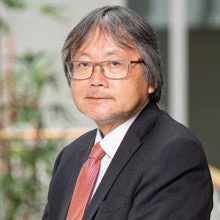 Jar with coins
Jar with coins
Over the past two decades, the global aid landscape has been transformed. Emerging-economy actors and other contributors are deploying considerable resources into global development finance—an area traditionally dominated by the Group of Seven (G7) countries. This welcome change has expanded the breadth and depth of financial support for the world’s poorest nations.
Maximizing the benefits of emerging economies’ growing influence in global development finance
Among emerging economies—those with middle- to upper-income status that can access global capital markets—the BRICS countries already account for a higher share of global GDP based on purchasing power parity than the G7 countries. BRICS, originally Brazil, Russia, India, China, and South Africa, admitted six new members earlier this year. Over the past decade, 22 percent of bilateral loans to developing countries (those with low and middle incomes) came from BRICS countries.
Türkiye and Saudi Arabia, two large emerging economies, are now the world’s most generous bilateral providers of official development assistance on a per capita basis. China is the single largest provider of loans to developing countries on both concessional and non-concessional terms.
Emerging economies are hosting major summits, and investing heavily in development and climate initiatives. Their actions, including the establishment of investment funds, are reshaping the aid landscape, lifting millions out of poverty, creating jobs, and boosting global consumption.
According to the latest UNCTAD World Investment Report, developing countries accounted for more than two-thirds of global foreign direct investment (FDI) in 2022, up from 60 percent in 2021. In contrast, developed economies’ FDI contributions declined by 37 percent, reflecting uncertainty in financial markets and the winding up of stimulus packages in these countries.
Emerging challenges in global aid
More money for global development is undeniably a good thing. But these changes have come at a time when the global aid architecture, as reported to OECD/DAC (which excludes most emerging donors) has become increasingly fragmented. Official financial flows have doubled, and the number of entities providing such finance has grown from 215 to 565 between 2002 and 2021. Over the same period, the balance between public and private financial flows has shifted, with private finance accounting for nearly 70 percent of current flows. In combination, these trends have created four major challenges for the world’s poorest countries, on the basis of OECD/DAC data.
First, the proliferation of donors and donor agencies places a burden on recipient countries with limited capacity and increases transaction costs for those already struggling to deal with multiple and overlapping crises.
Second, donor-funded activities have become more fragmented. The average size of an official development assistance grant has more than halved, from $1.7 million in 2000 to less than $800,000 in 2021. So there is more money today, but it is split into smaller parcels, resulting in higher costs for recipient countries—many of which are already in debt distress.
Third, a growing proportion of development assistance bypasses recipient government budgets, limiting sovereign agency. Today, three out of four projects are implemented by non-governmental entities and half these funds circumvent recipient country budgets, undermining aid effectiveness. Donor funding is also increasingly earmarked for specific issues, limiting opportunities to leverage resources and increase the overall financing available to countries.
And fourth, there has been a large increase in the volume of aid allocated to unleveraged facilities dedicated to specific sectors or themes. The total grant commitments of such facilities have grown sixteen-fold over the past two decades, while contributions to the concessional arms of multilateral development banks have been declining in real terms. This represents a missed opportunity to leverage scarce concessional resources.
What do these trends mean at a global level? The global aid community needs to work together to prevent overlapping, fragmented support that hinders rather than helps. To ensure countries get the maximum benefit from development support, traditional and non-traditional donors need to communicate and work together, transparently, towards shared goals, reducing the burdens facing low-income countries. Crucially, recipient country governments need to play a leading role in this process.
One vehicle to address these concerns is the World Bank’s International Development Association. IDA’s global presence, convening power, and analytical capacity put it in a unique position to support the coordination of global aid.
As the world’s largest fund for the poor, IDA has a global community of 59 donors (including all the BRICS countries) that allows for effective engagement. Unlike unleveraged funds, IDA is able to leverage $1 in donor support into nearly $4 in financial support for the poorest countries. IDA reduces the burden on recipient countries by providing a unified platform to discuss aid architecture and facilitate information sharing and transparency. Furthermore, it ensures funds are used effectively by reducing fragmentation and channeling financing through recipient governments, which in turn strengthens country systems. And IDA’s ability to convene governments, civil society organizations, and other development partners makes it a key player in addressing the challenges we face.
As the demand for development finance continues to grow, IDA's role in providing concessional finance, fostering debt sustainability, and strengthening partnerships will be essential in addressing global crises and emerging challenges in the global aid architecture.


Join the Conversation